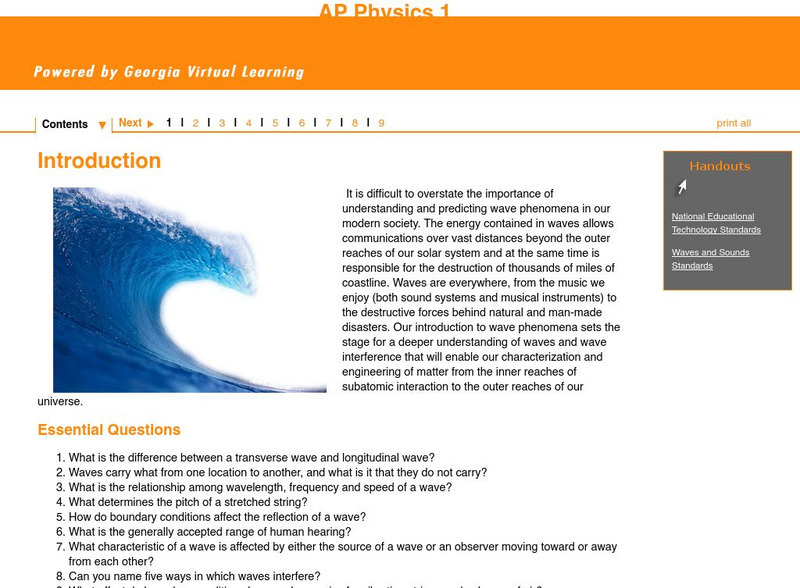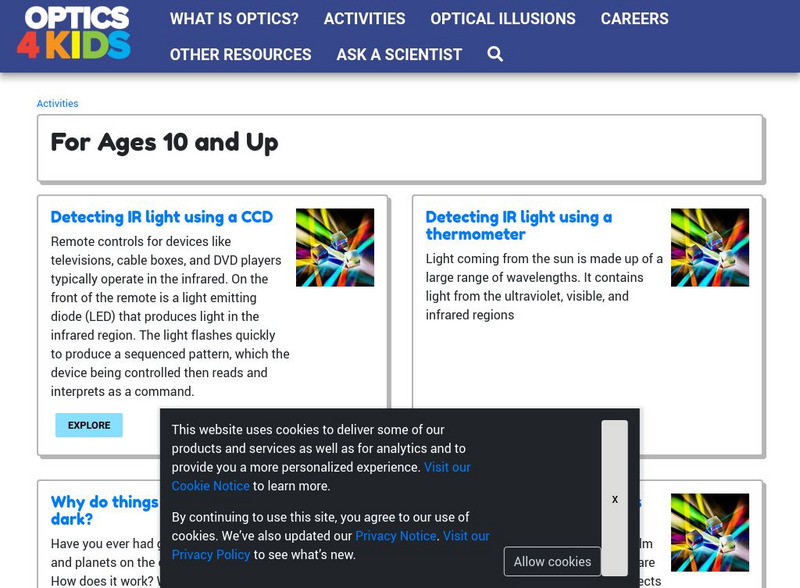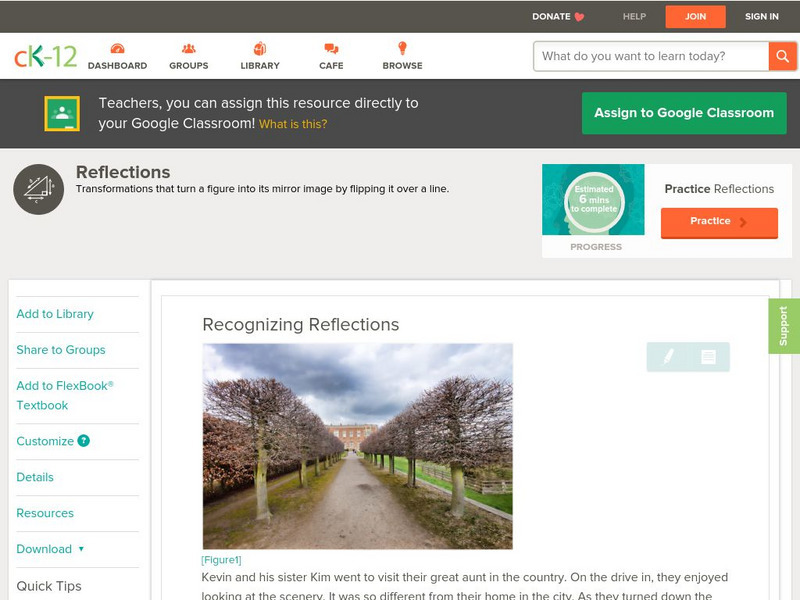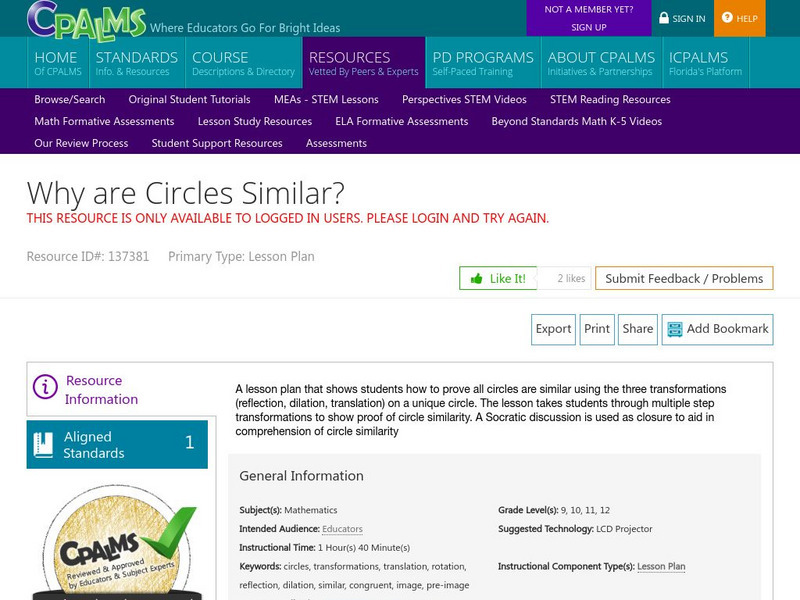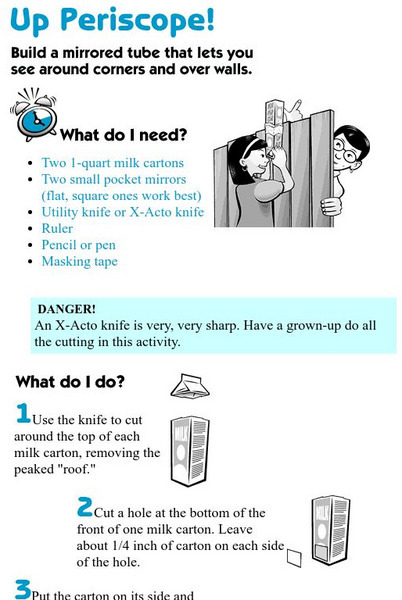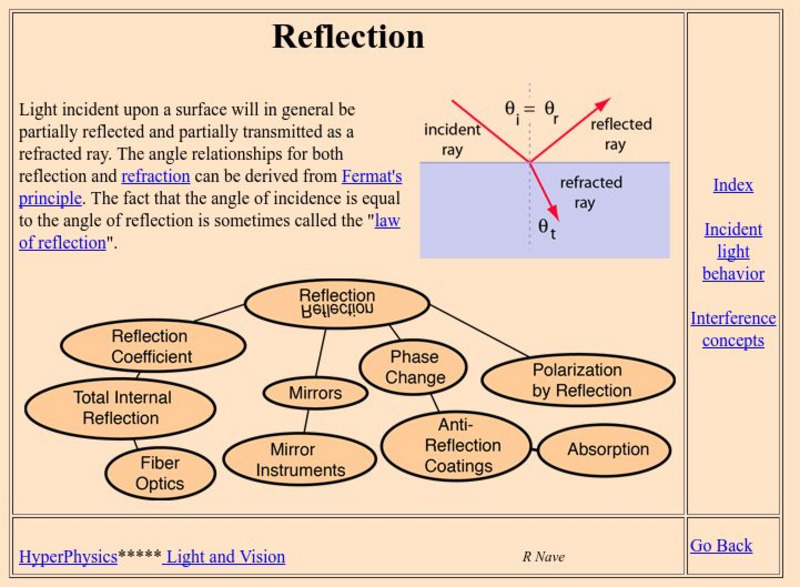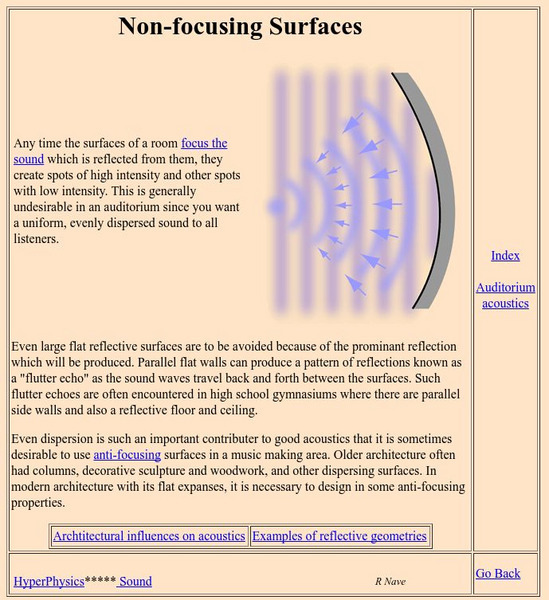Physics Classroom
The Physics Classroom: The Nature of a Wave
A very good introduction to the world of waves. Waves and wavelike motion, what is a wave, and categories of waves are the topics examined in this site. Many links to other wave sites.
Georgia Department of Education
Ga Virtual Learning: Ap Physics 1: Waves and Sound
Students will understand and predict wave phenomena, and investigate the energy contained in waves. They will gain a deeper understanding of waves and wave interference that will enable characterization and engineering of matter from the...
University of Waterloo (Canada)
University of Waterloo: Cemc: Geometry and Spatial Sense: Transformations [Pdf]
Accompanied by links to online activities and demonstrations, students learn about the different types of transformations on a coordinate grid through this lesson plan. The lesson is designed to match the Grade 7 Ontario curriculum, with...
Optical Society
Optical Society of America: Exploring Science of Light: Intermediate Activities
A collection of intermediate experiments, for students aged ten and up, for exploring the magnification, reflection, and refraction of light.
abcteach
Abcteach: Biography Book Report Form [Pdf]
Great printable resource to help students write a report on a biography. Touches on major elements and encourages personal reflection.
Utah Education Network
Uen: Trb 3:1 Investigation 3 What Is Moonlight?
Understand that the moon shines by reflecting sunlight.
CK-12 Foundation
Ck 12: Geometry: Reflections
[Free Registration/Login may be required to access all resource tools.] Recognize reflections as flips and also identify lines of reflection. Includes lots of examples, as well as review exercises. Other sections of the tutorial offer...
CK-12 Foundation
Ck 12: Wave Properties
[Free Registration/Login may be required to access all resource tools.] Students investigate behaviors of waves, including interference, reflection, refraction, and diffraction.
BBC
Bbc: Gcse Bitesize: General Properties of Waves
Light travels as waves. Waves can be described by their amplitude, wavelength and frequency. The speed of a wave can be calculated from its frequency and wavelength.
CPALMS
Cpalms: Why Are Circles Similar?
[Free Registration/Login Required] A comprehensive lesson plan for teaching how to prove that all circles are similar by using three types of transformations.
Alabama Learning Exchange
Alex: Geometry City
This lesson plan reviews transformations in the coordinate plane while mimicking real-world planning skills. It gives an assessment and ideas for remediation, extention as well as ways to manage behavior problems and reluctant learners.
American Museum of Natural History
American Museum of Natural History: See the Light
Take a look at light with these three easy experiments
Other
Brandeis University: How Planning and Reflection Develop Young Children's Thinking Skills
Young children ages three to six are capable of making thoughtful decisions about their behavior and keen observations about their environment. We can promote the development of thinking and reasoning in young children in the early years...
Open Ed
Open Ed Sci: 6.1 Light & Matter
How does a one-way mirror work? Though most everyone knows that one-way mirrors exist, having students model how they work turns out to be a very effective way to develop their thinking about how visible light travels and how we see...
E-learning for Kids
E Learning for Kids: Math: Market Place: 2 D Space
At the Food Market there are a lot of shapes. Help Afia find and name the shapes.
Exploratorium
Exploratorium: Bubbularium
What colors do you see in a bubble? Why do you see colors in a bubble? Use this site to find out the answer to these questions with this easy experiment.
Exploratorium
Exploratorium: Up Periscope!
Children can look around corners with this homemade periscope. Great instructions at this Exploratorium site on how to build a periscope.
Cosmos 4 kids
Cosmos4 Kids: Exploration:telescopes
Learn how telescopes work .. terms like reflection, refraction, different kinds of lens, and more. The brief, to the point text makes this site most suitable for younger researchers.
Georgia State University
Georgia State University: Hyper Physics: Behavior of Incident Light
This site from Georgia State University is an indexing page for several other pages on the topic of reflection. Topics are treated in an understandable manner and utilize meaningful graphics.
Georgia State University
Georgia State University: Hyper Physics: Mirrors in Imaging
A discussion from Georgia State University of different types of mirrors and the images which they create. Discusses different instruments which use mirrors to produce images.
Georgia State University
Georgia State University: Hyper Physics: Mirror Instruments
This site from Georgia State University discusses the means by which mirrors and lenses are combined to produce an optical instrument which accomplishes a specific purpose. Good illustrations.
Georgia State University
Georgia State University: Hyper Physics: Architecture for Acoustics
A physics tutorial on designing an auditorium and solving the problem of sound reflection. Illustrated.
Georgia State University
Georgia State University: Hyper Physics: Non Focusing Surfaces
This hypertext physics course tutorial on nonfocusing surfaces relates various design principles to good auditorium design. Illustrated.
Georgia State University
Georgia State University: Hyper Physics: Sound Propagation
This page and the many pages which are indexed to focus on the behaviors of sound which characterize it as a wave. Reflection, refraction, interference, diffraction and more are clearly illustrated and explained.



